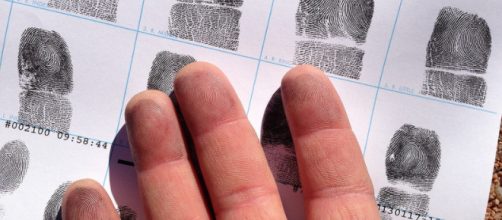Fingerprints are one of the means of personal identification, one form of biometrics. It became very popular because it is easy to classify and sort. They're also accessible and cheap. Fingerprints are made of an arrangement of ridges, called friction ridges. Each ridge contains pores, which are attached to sweat glands under the skin. You leave fingerprints on everything you touch because of this sweat.
There are two different types of prints
1. Visible prints that are made on a type of surface that creates an impression, like blood, dirt or clay
2.
Latent prints that are made when sweat, oil and other substances on the skin reproduce the ridge structure of the fingerprints on a glass, murder weapon or any other surface.
Fingerprints are the basis for criminal history foundation at every police agency on earth.
Fingerprinting has been used as evidence in criminal activities in the UK since the first Forensic Laboratory began operating in Scotland Yard in 1901.
However, experts say that the basic assumption is that every person has a unique print that can be quickly verified through computer bases, may be wrong.
The reasons why it isn't reliable proof
Forensic Mike Silverman, who introduced the first automated fingerprint detection system to the police, claims that human mistakes, partial prints and fake prints prove that this type of identification is not as reliable as it is believed.
He explained that no one has yet proved that fingerprints are unique since family members can have the same patterns.
Also, the problems that arise are fingerprints in elderly people that may be different from those of their younger days, because with time, the skin loses elasticity and in rare cases, it happens that some people get smooth fingers, according to HowStuffWorks.
More importantly, an injury that destroys the dermal papillae, will permanently obliterate the ridges.
According to Silverman - "In fact, it cannot be proved that there are no two identical fingerprints. When taking into account all details, every furrow, it can be concluded that there are no two identical prints, even if they were made from the same finger one after the other, said Silverman.
He adds that this type of evidence also requires expert examination to determine whether the imprint from the crime scene and the print from the database were taken from the same finger.
There are a number of cases in the world where innocent people have been wrongly convicted because of fingerprinting.


